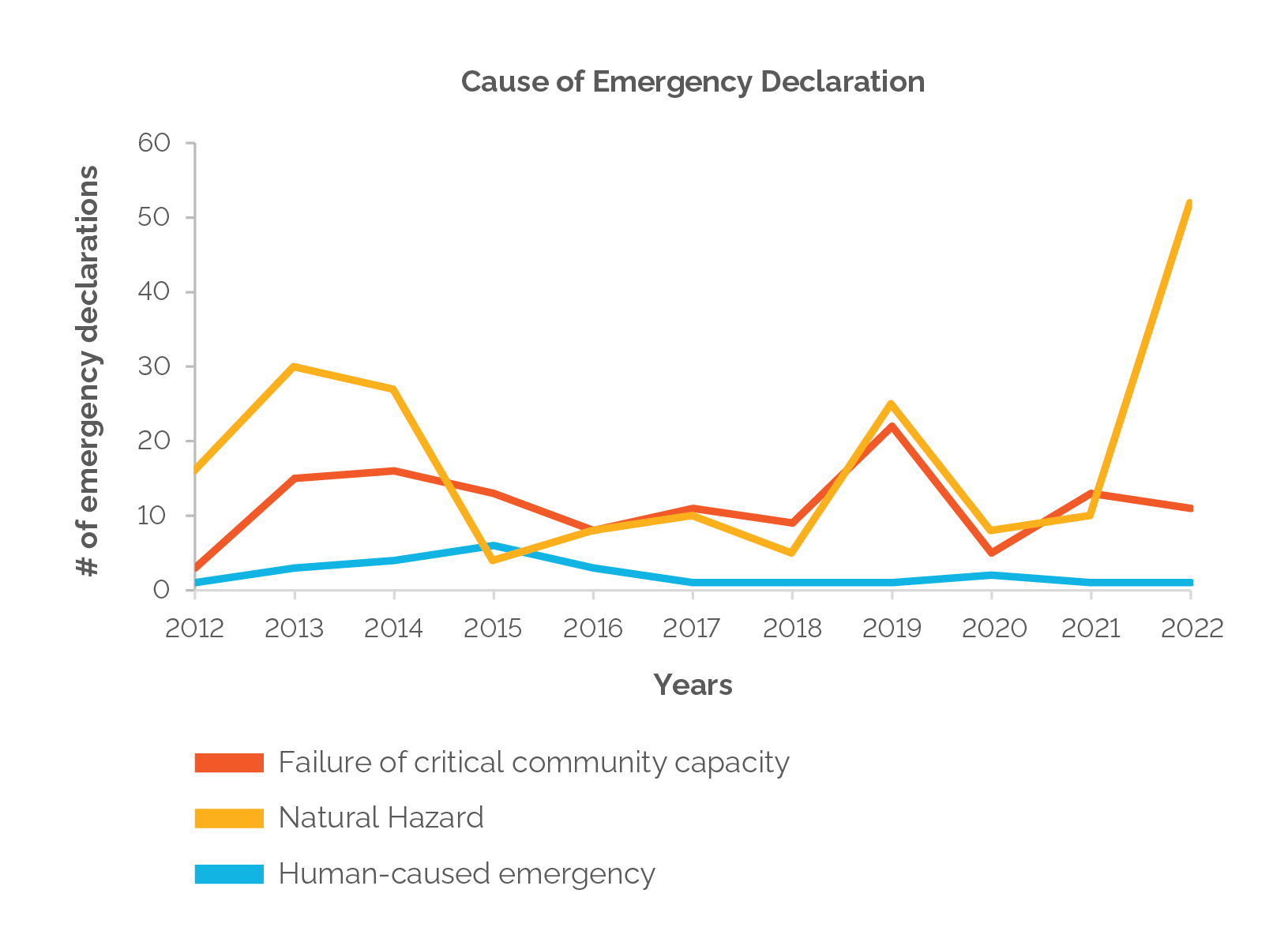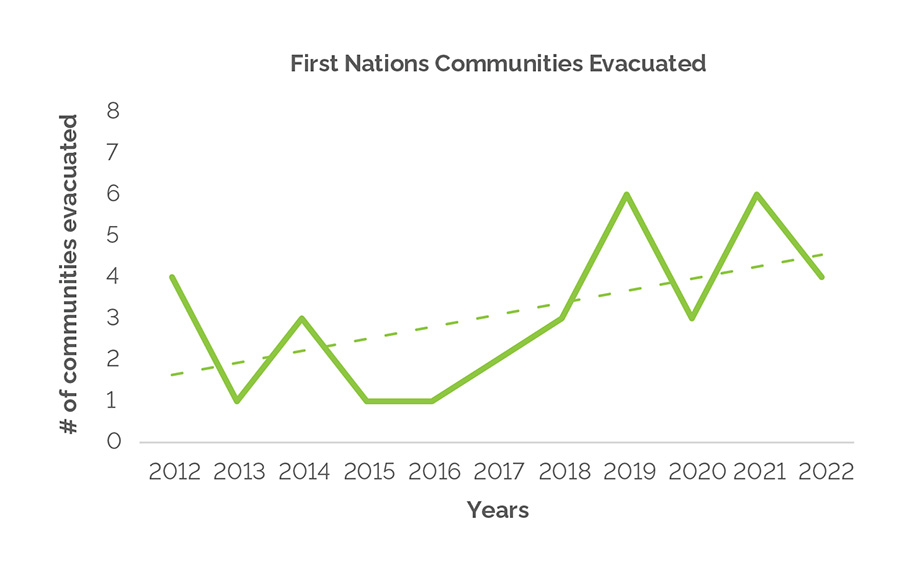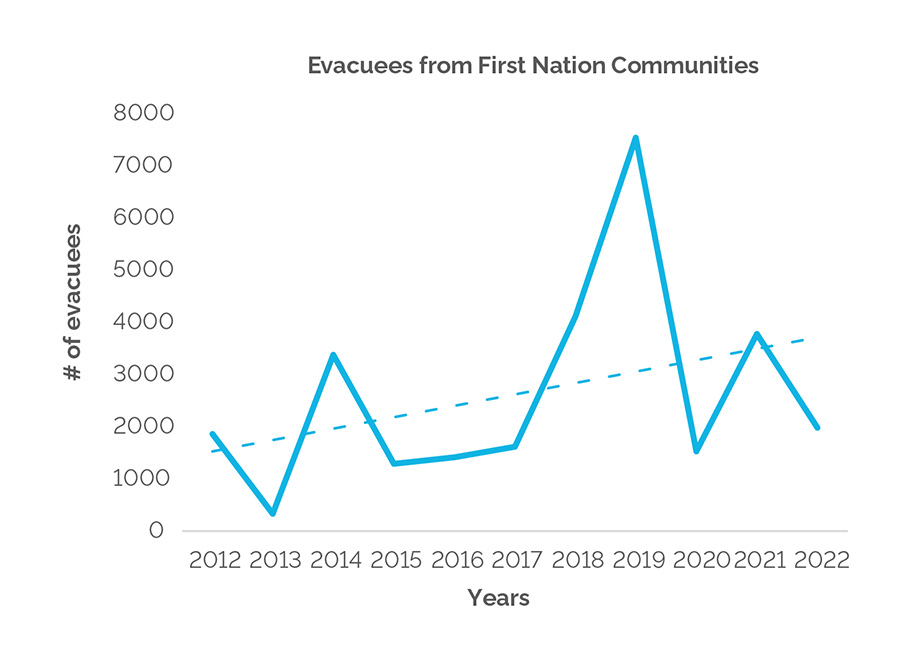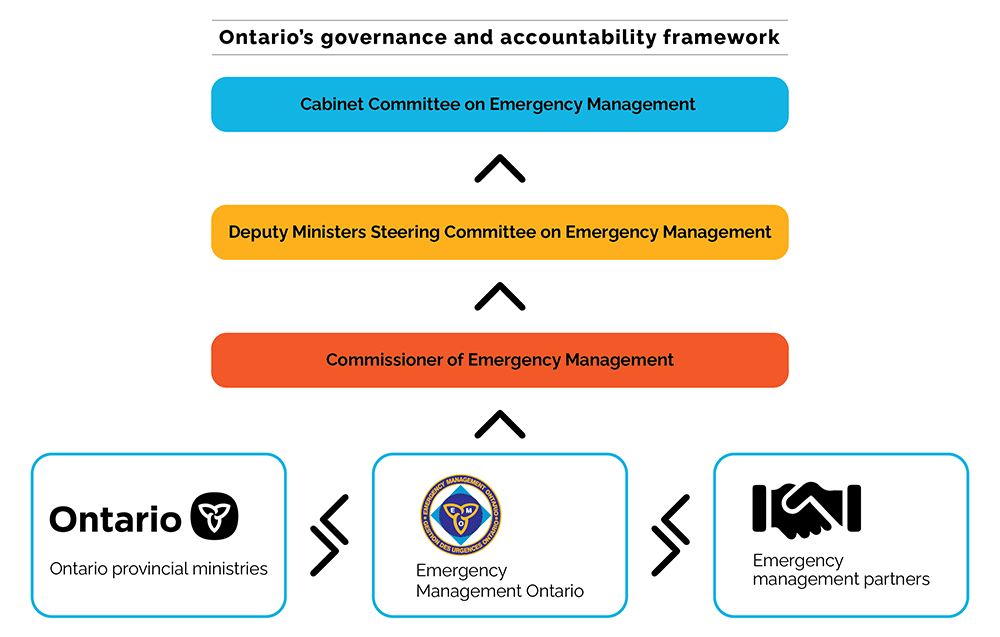A message from the Minister

Message from Minister Sarkaria
As minister responsible for emergency management, I am honoured to coordinate the efforts of our government to oversee Ontario’s emergency planning, preparedness and response.
There is nothing more important than the safety and wellbeing of our families and loved ones, and I recognize that Ontarians across the province are counting on our government to get this right. The importance of ensuring that our province is as prepared as possible for any potential emergency cannot be understated. This is why I am pleased to introduce Ontario’s first comprehensive plan and approach for emergency management, which is the first in Canada that requires annual and public reporting on progress.
Building on our government’s A Plan to Stay Open, the Provincial Emergency Management Strategy and Action Plan outlines a comprehensive vision for emergency management for all of Ontario. And that vision is simple: Ontarians in every community, from Brampton to Thunder Bay and everywhere across our province, should be safe, practiced, and prepared at all times. To reach this goal, we have created a plan that is the result of productive and ongoing engagement with municipal and First Nations partners, and other critical allies in the emergency management space. This cooperation, collaboration, and communication is the strong foundation upon which this plan is built.
We are proud of the goals and actions outlined in this plan. They are designed to keep Ontario in a state of constant readiness and preparedness — both now and into the future. The work of safeguarding and protecting the province is always evolving, and the people of Ontario deserve the very best safeguards and protections that any government can provide. We have all learned that there is simply no substitute for practice and preparedness. That is why we are dedicated to always learning, improving, and delivering on the safety measures and plans that we have in place — to meet the needs of today while planning for tomorrow.
Together, we are ensuring that our province not only meets the absolute highest standard of emergency management — but leads the nation with a made-in-Ontario, first-in-Canada, comprehensive plan and approach with annual reporting requirements to managing emergencies. We have faced crises in the past, and the reality is that we will face different challenges in the future. Whatever the circumstances, it is our pledge that Ontario will be ready.
Prabmeet Singh Sarkaria
President of the Treasury Board and Minister Responsible for Emergency Management
A message from the Commissioner

A foreword from the Commissioner of Emergency Management Ontario, Treasury Board Secretariat
Emergency Management Ontario is pleased to present Ontario’s first-ever Provincial Emergency Management Strategy and Action Plan, a roadmap for a whole-of-government approach to keep the people of Ontario safe, practiced and prepared. As Commissioner of Emergency Management, it is my sincere honour to provide Ontario with a plan that places the most vulnerable at the centre of preparedness, planning and mitigation ahead of emergencies.
"Working together to prepare, prevent and mitigate emergencies to keep the people of Ontario safe."
Emergency Management Ontario’s expansion is part of the province’s steadfast commitment to ensuring that Ontario is a leader in emergency preparedness. It is not a matter of “if” emergencies will happen, but rather “when.” With the sharp rise in emergency events across Canada and devastating financial costs of disaster response and recovery, which is estimated at over $10 billion annually
Municipalities and First Nations communities have risen to this challenge by implementing local models for emergency management, evacuations and partnerships. Emergency Management Ontario will augment and support the local expertise on the ground with an inventory of provincial capabilities, ready to deploy at a moment’s notice.
The Provincial Emergency Management Strategy and Action Plan is built on the principles of accountability and transparency. The plan will evolve on a yearly basis with ongoing opportunities for municipal, Indigenous and partner engagement, reporting on progress annually. As the one window for emergency management coordination in the provincial government, Ontarians can rest assured that the government is working collaboratively to support municipalities and First Nations communities who are the first line of preparedness, planning, mitigation, response and recovery. Working together, we will ensure that Ontario is ready for anything.
Bernard Derible
Deputy Minister, Commissioner Emergency Management
Emergency Management Ontario
Treasury Board Secretariat
Introduction – A safe, practiced and prepared Ontario
Ontario’s first-ever Provincial Emergency Management Strategy and Action Plan ensures that Ontarians are safe, practiced and prepared before, during and after emergencies. The plan sets a foundation for emergency management in Ontario, informed by emergency events across the province, and placing the most vulnerable, including but not limited to Indigenous peoples, persons with disabilities, seniors, racialized communities, and persons experiencing poverty and at risk for homelessness, at the centre of planning, preparedness and mitigation.
From wildland fires to flooding, tornadoes, windstorms, cyber security threats, and pandemics, there has been a significant increase in emergencies across Canada and Ontario. The Provincial Emergency Management Strategy and Action Plan builds on lessons learned from past emergencies including the COVID-19 pandemic which was the single largest provincial emergency in decades.
Principles
- Transparent and accountable: ensuring clear and strengthened governance and public reporting that is responsible and accountable to all Ontarians.
- Accessible and inclusive: recognizing and responding to the unique needs of all Ontarians, including vulnerable populations and Indigenous peoples.
- Proactive and nimble: ensuring that the province has a continuous and enhanced focus on planning, readiness and response and is vigilant and flexible to address different types of emergencies.
- Collaborative: working together with partners including municipalities, Indigenous partners, provincial ministries and other levels of government to deliver on a shared commitment to excellence in emergency management.
- Courageous and innovative: demonstrating leadership and advancing emergency management priorities based on best practices and modern approaches to better support all Ontarians.
Goals
This plan identifies three goals to guide the province’s approach to emergency management:

One window for all Ontarians
Emergency Management Ontario will be the one window for all Ontarians to ensure that emergency management is coordinated quickly and efficiently across the province. While municipalities and First Nations communities are on the front-line during emergency events, Ontario will be prepared to augment capabilities at a moment’s notice.
Proactive planning and monitoring
Proactively planning for emergency events, grounded in data, analytics and knowledge will set the foundation for the one window approach. Emergency Management Ontario will identify potential risks to inform short and long-term planning for future emergencies, incorporating the contributions of Indigenous Elders and Traditional Knowledge Keepers.
Practiced and prepared emergency response
Ontario will be a leader in practiced and prepared emergency response, ensuring emergency management partners are ready for any emergency. Through strengthened emergency management training and public education, Ontarians will be better prepared for emergency events.
Summary of key features of the plan
- Outlines the province’s strengthened governance and accountability approach to facilitate the one window approach for provincial emergency management coordination.
- Describes Emergency Management Ontario’s expansion under the leadership of a dedicated Commissioner of Emergency Management to coordinate and facilitate preparedness, information sharing, and proactive emergency supports for Ontario.
- Highlights key actions that Ontario is taking on emergency management through prevention, mitigation, preparedness, response and recovery to continue building a safe, practiced and prepared Ontario.
- Includes supports to reflect the needs of partners including municipalities and Indigenous partners across Ontario.
- Demonstrates Ontario’s leadership in measuring progress towards implementing the strategy and action plan and committing to accountability and transparency as the first jurisdiction in Canada to annually and publicly report on emergency management progress.
Measuring progress
The Provincial Emergency Management Strategy and Action Plan provides a roadmap to move emergency management forward and ensure a safe, practiced and prepared Ontario. The government is committed to transparency and accountability to all Ontarians and will publish annual reports detailing the progress made on the goals and actions of the strategy and action plan.
The Provincial Emergency Management Strategy and Action Plan
Vision
A safe, practiced and prepared Ontario.
Mission
To ensure Ontarians are safe, practiced and prepared before, during and after emergencies.
Principles
- Transparent & accountable.
- Accessible & inclusive.
- Proactive & nimble.
- Collaborative.
- Courageous & innovative.
Goals
1. One window for all Ontarians
- Strengthen governance and accountability.
- Ensure the unique needs of vulnerable populations are considered throughout the emergency management cycle.
- Increase clarity in Ontario’s emergency management approach and structure and reduce the administrative burden for emergency management partners.
2. Proactive planning and monitoring
- Use data and knowledge to inform emergency management decisions.
- Proactively identify the likelihood and impact of risks in the province.
- Identify, support and develop provincial capabilities for top provincial hazards.
- Develop support resources for emergency management partners.
3. Practiced and prepared emergency response
- Implement a Provincial Exercise Program and review, update and create new provincial emergency response plans.
- Enhanced provincial surge capacity through Ontario Corps.
Emergency management cycle
- Prevention
- Mitigation
- Preparedness
- Response
- Recovery
Goal 1 – One window for all Ontarians

As the one window for provincial emergency management coordination, Emergency Management Ontario will proactively work with municipalities, Indigenous partners, provincial ministries, the federal government, organizations supporting vulnerable populations, and other partners to coordinate and facilitate preparedness, information sharing, and proactive emergency supports.
Emergency Management Ontario’s one window approach
Preparedness
| Support |
|
|---|---|
| Partner |
|
| Coordinate |
|
| Monitor |
|
Response
| Support |
|
|---|---|
| Partner |
|
| Coordinate |
|
| Monitor and assist |
|
Ontario’s initiatives at work
- Expanded emergency management capacity: To ensure Ontarians are safe, practiced, and prepared for any emergency, the government has expanded the province’s emergency management capacity through Emergency Management Ontario and appointed a dedicated Commissioner of Emergency Management.
- Increased local supports: In 2022, Emergency Management Ontario doubled its regional field services staff to better support all regions of the province and provide regular and ongoing emergency management support and guidance to communities.
- Approach to annual flooding and wildland fires: Each year, Emergency Management Ontario proactively works with partners through planning and working groups, including an annual symposium and updates to operational plans, to prepare for potential emergency management supports required to assist communities experiencing flooding and wildland fires in Ontario. The approach to flooding in spring 2022 demonstrates the types of supports provided by Emergency Management Ontario. Following several weeks of heavy rainfall, Northwestern Ontario experienced major flooding within Sioux Lookout, Kenora, Dryden, Fort Frances and Atikokan. Emergency Management Ontario deployed staff to provide assistance, including providing sandbags, and collaborating with municipal staff within these communities. Emergency Management Ontario staff also supported recovery from the James Bay flooding in 2022 by locating host communities within the Cochrane District, such as Val Rita or hosting evacuees in sites within the Greater Toronto Area.
- Provincial support for unplanned events: Through Emergency Management Ontario, the province coordinated emergency management assistance, including crews to clear downed trees and resources to facilitate communication to the provinces that were impacted by Hurricane Fiona in 2022, as well as communities impacted by the winter storm across Ontario in December 2022.
- Winter readiness campaign: To better inform Ontarians of how to be prepared for winter hazards, Emergency Management Ontario launched a Winter Readiness Campaign in December 2022. Information will continue to be shared on social media and other channels to inform Ontarians how to best prepare for severe weather and other hazards.
- Annual exercise credit: The government has reduced red tape by increasing the flexibility for municipalities and provincial ministries to test emergency management plans annually through an annual practice exercise or responding to an emergency. The government will continue to work collaboratively with municipalities and provincial ministries on the annual process and criteria for meeting these requirements.
Ontario’s new initiatives
Strengthen Ontario’s governance and accountability by establishing an action-oriented one window for provincial emergency management coordination
Actions
- Implement a strengthened provincial governance and accountability framework that includes Emergency Management Ontario as the one window for provincial emergency management coordination, and regular engagement of the Cabinet Committee on Emergency Management and the Deputy Ministers Steering Committee on Emergency Management, to facilitate proactive and rapid information sharing and monitoring across government.
- Work with federal, provincial, and territorial partners, in addition to other jurisdictions, to ensure alignment of emergency management efforts, so all partners are working collaboratively to achieve shared emergency management goals.
Ensure the unique needs of vulnerable populations are considered throughout the emergency management cycle
Actions
- Engage with partners, including the federal government, Indigenous partners and organizations supporting vulnerable populations, to consider the unique needs of vulnerable populations as part of the emergency management cycle.
- Work directly with First Nations partners to enhance approaches, strategies, training, tools, processes and products which will enhance First Nations emergency management capacity. Engage with First Nations partners on an approach for culturally sensitive training.
Increase clarity in Ontario’s emergency management approach and structure and reduce administrative burden for emergency management partners
Actions
- Review the current framework of roles and responsibilities related to emergency management to identify areas to further strengthen clarification. Engage with municipalities, Indigenous partners and provincial ministries in 2023 to better understand opportunities for improvement to the current framework for roles and responsibilities.
- Engage municipalities, Indigenous partners and provincial ministries on opportunities to reduce administrative burden.
Goal 2 – Proactive planning and monitoring

Emergency Management Ontario will enhance data, knowledge and analytic capacity to enable proactive planning and monitoring of potential emergencies province-wide. Ontario also respects and acknowledges the value and contributions of Indigenous Elders and Traditional Knowledge Keepers, as the government works in partnership with Indigenous partners to prepare for and respond to emergencies including flooding and wildland fires.
The government will use technology to collect and share information to proactively identify needs, gaps, trends and issues to strengthen emergency management preparedness, mitigation and response in the province.
Ontario’s initiatives at work
- Flooding strategy: This strategy strengthens Ontario’s preparedness for future flooding events as a result of climate change, and also addresses severe flooding that impacted extensive areas of the province in 2019. Through collaboration between all levels of government, Indigenous partners, businesses and Ontarians, the province is: enhancing flood mapping to better understand flood risk; enhancing flood forecasting and early warning to improve flood preparedness; implementing proactive emergency response to flooding events; and creating well-coordinated and effective emergency response programs for Ontarians and municipalities.
- Cyber Security Centre of Excellence: To prepare Ontario for the evolving risks related to cyber security, the government created the Cyber Security Centre of Excellence as part of Ontario’s first-ever Cyber Security Strategy to keep Ontarians’ information safe and secure through educating provincial ministries and broader public sector organizations about cyber security and best practices.
- Municipal led initiative: City of Cambridge’s Emergency Operations Centre Situational Tool: To enable rapid information sharing and consistent awareness across the city during emergencies, the City of Cambridge has developed a technological solution that allows for centralized real-time situational updates from multiple departments.
- First Nations led initiative: First Nations Emergency Response Association: An association of First Nations regional organizations and communities co-chaired by the Independent First Nations Alliance and the Nokiiwin Tribal Council that was formed to share best practices and collaborate on First Nations led emergency preparedness, planning and response initiatives.
- First Nations led initiative: Community Fire Smart Plans: Paawidigong First Nations Forum has supported the First Nations they serve (Migisi Sahgaigan [Eagle Lake], Wabigoon Lake Ojibway Nation, Wabauskang, Lac Seul and Lac Des Milles Lacs) in creating comprehensive community FireSmart plans to provide direction on the operational and administrative steps needed to make each community safer from the threat of a wildfire.
- First Nations led initiative: Hazard Identification and Risk Assessment Program: Paawidigong First Nations Forum has proactively worked with the First Nations they serve (Migisi Sahgaigan [Eagle Lake], Wabigoon Lake Ojibway Nation, Wabauskang, Lac Seul and Lac Des Milles Lacs) to develop community-specific Hazard Identification and Risk Assessment reports to better inform the creation of tailored emergency management plans by identifying the likelihood and impact of risks that are unique to each community.
Ontario’s new initiatives
Use data and knowledge to inform emergency management decisions
Actions
- Develop and maintain tools to better utilize data to inform emergency management decisions including:
- by the end of 2023, the government will complete profiles of Ontario’s unincorporated territories
- development of a suite of geographic and socio-economic profiles to enhance monitoring and surveillance related to emergency hazards and risks and their impacts on vulnerable populations by 2024
- Work with Indigenous partners including the First Nations Emergency Response Association on how to best use and capture traditional ecological knowledge to support forward-looking emergency monitoring and surveillance for natural disaster events and severe weather to enhance local and provincial mitigation and preparedness.
Proactively identify the likelihood and impact of risks in the province
Actions
- Develop a coordinated provincial hazard and risk monitoring process in collaboration with provincial ministries by the end of 2023.
- Update the Hazard Identification and Risk Assessment program including the development and release of a provincial risk profile by the end of 2024. This provincial risk profile will enable more effective province-wide planning and monitoring of the top identified risks to reduce their likelihood of causing an emergency and impact if not able to be prevented.
Identify, support and develop provincial capabilities for top provincial hazards
Actions
- Develop a mapping of provincial capabilities and processes related to top provincial hazards ready to deploy to support emergencies.
- Identify goods and services required to respond to the top provincial hazards.
- Develop plans for provision of these key goods and services during emergencies.
Develop support resources for emergency management partners
Actions
- Create resources to support municipalities in planning and conducting exercises including an “Exercise in a Box” in 2023. This includes a step-by-step guide, checklists and supporting materials to conduct and evaluate a municipal exercise.
- Continue to enhance municipal emergency management training through the direct delivery of Emergency Management Ontario-instructed courses in 2023 and annually thereafter, and bring all existing courses up-to-date by 2024. To deliver this enhanced training, additional course instructors will be certified by Emergency Management Ontario by 2024.
- Enhance public education programming to be broader in scope and provide municipalities with up-to-date, preparedness and response information and print materials.
- Explore the creation of a centralized portal for partners to ensure resources such as best practice examples and helpful checklists are easily accessible to support local emergency management programs.
Goal 3 – Practiced and prepared emergency response

The more practiced and prepared the province is for potential future emergencies such as pandemics, cyber security threats, nuclear events, or wildland fires, the quicker the government will be able to respond, if required to assist, and the smaller the impact of the emergency will be.
The government will launch a Provincial Exercise Program which will be a multi-year plan to exercise, test and strengthen multi-sector emergency plans and whole-of-government emergency response. Additionally, Emergency Management Ontario will assist partners in delivering on their local emergency management responsibilities and ensure that all provincial emergency response plans are up-to-date.
Ontario's initiatives at work
- Personal protective equipment and critical supplies and equipment stockpile: To protect Ontarians against future unforeseen emergencies, the government passed the first legislation of its kind in Canada, the Personal Protective Equipment Supply and Production Act, 2022. This Act requires the province to maintain a supply of personal protective equipment and critical supplies and equipment. This supply will be available during normal operations and can be deployed to withstand the challenges of extraordinary events. Implementation of this Act will help strengthen internal production and supply chains for personal protective equipment, and critical supplies and equipment by leveraging Ontario’s extensive manufacturing capability, where possible. Over the next 18 months, it is projected that over 93 per cent of the province’s ongoing procurement of personal protective equipment will be with Ontario and Canadian-based manufacturers.
- Programs to improve community preparedness: The government has implemented programs to better prepare, prevent and mitigate the impacts of emergencies on Ontario communities. This includes the Build Back Better pilot project as part of the Municipal Disaster Recovery Assistance program which was created to provide funding to municipalities for climate resilience improvements when rebuilding damaged municipal property or infrastructure. This also includes the Ontario Community Infrastructure Fund, which was created to support 425 small, rural and northern communities renew and rehabilitate their infrastructure so that it is safer and more reliable. Under this fund, the government is providing nearly $2 billion over five years starting in 2022.
- Regional Social Emergency Managers Program: To help build capacity around emergency prevention, response and recovery for remote First Nations communities, the Ministry of Indigenous Affairs, in consultation with Indigenous partners, implemented the Social Emergency Managers Program. Starting in 2021, the fund provides $1.375 million annually over 10 years to 11 Tribal Councils and Regional Organizations in Nishnawbe Aski Nation and Grand Council Treaty #3 to provide emergency support in remote First Nations communities.
- First Nations led initiative: Grand Council Treaty #3 Emergency Resource in Support Communities: The new GeoPortal is an interactive tool where different forms of spatial information and data can be stored, viewed, and accessed. It allows community members and associates a safe and secure place to access documents, data, reports, and maps related to Treaty #3 area and its communities. Not only will communities be able to upload and save their own projects and documents, but users will also have access to an online mapping tool with a diverse collection of layers to create their own maps.
- First Nations led initiative: Independent First Nations Alliance (IFNA) Integrated Emergency Services: IFNA Integrated Emergency Services staff have developed two services, an Emergency Operations Centre and deployable Incident Management Teams, to ensure that there are emergency response capabilities around the clock to support their member First Nations communities.
Ontario’s new initiatives
Implement a Provincial Exercise Program and review, update and create new provincial emergency response plans
Actions
- Hold or participate in multi-disciplinary provincial, nuclear and federal-led tabletop exercises in 2023, and annually thereafter, with a wide range of participants.
- Identify and hold provincial priority exercises with partners every two years starting in 2024, in addition to the first action.
- Work with partners to update the Provincial Emergency Response Plan by 2024.
- Work with partners to update the Provincial Nuclear Emergency Response Plan by 2024.
Enhanced provincial surge capacity through Ontario Corps
Actions
- Enhance provincial surge capacity through Ontario Corps in 2023 by leveraging the existing capacity, expertise, and capabilities of partners to ensure predictable volunteer and specialized technical capacity is available to support communities, including outreach and engagement with culturally diverse stakeholders and populations.
- Pilot a deployable surge team in 2023 which can provide incident management and coordination support to partners upon request.
Measuring progress and next steps
The first ever Provincial Emergency Management Strategy and Action Plan provides a roadmap, outlined in the three goals and associated actions, to move emergency management forward and ensure a safe, practiced and prepared Ontario.
The government is committed to transparency and accountability to all Ontarians and will publish annual reports detailing the progress made on the goals and actions of the strategy and action plan.
Moving forward, the government will continue to collaborate with emergency management partners, including municipalities, Indigenous partners and provincial ministries to further strengthen the Provincial Emergency Management Strategy and Action Plan to ensure the safety and wellbeing of all Ontarians.
Appendix A: Glossary
- Build back better:
- ‘Build back better’ is an approach to assess and align recovery in the whole emergency management cycle. ‘Build back better’ aims to increase the resilience of impacted communities by addressing the root causes of emergencies to reduce their impact and risk of reoccurrence.
- Commissioner of Emergency Management:
- Leads the development and implementation of emergency management programs in Ontario including prevention, mitigation, preparedness, response and recovery strategies.
- Data:
- Facts, knowledge, information and statistics collected together for reference or analysis.
- Declaration of emergency:
- An emergency can be declared based on a situation or an impending situation that threatens public safety, public health, the environment, critical infrastructure, property, and/or economic stability and exceeds the scope of routine community emergency response.
- Disaster:
- A serious disruption to an affected area, involving widespread human, property, environmental and/or economic impacts, that exceed the ability of one or more affected communities to cope using their own resources.
- Emergency:
- A situation or an impending situation that constitutes a danger of major proportions that could result in serious harm to persons or substantial damage to property and that is caused by the forces of nature, a disease or other health risk, an accident, or an act whether intentional or otherwise. (Source: Emergency Management and Civil Protection Act)
- Emergency Management and Civil Protection Act (EMCPA):
- Establishes the province’s legal basis and framework for managing emergencies. The legislation does this by defining the authority and responsibilities accorded to provincial ministries, municipalities, and to specific individuals.
- Emergency management cycle:
- Explains that the five core components of emergency management (prevention, mitigation, preparedness, response and recovery) work together as part of a continuous cycle to manage and address risks.
- Emergency Management Ontario:
- Part of the Treasury Board Secretariat and has overall provincial emergency management responsibility. Emergency Management Ontario is responsible for the coordination, promotion, development, implementation and maintenance of effective emergency management programs throughout Ontario and for the coordination of these programs with the municipal government, federal government, Indigenous partners and others.
- Emergency management plans:
- A plan developed and maintained to direct an organization’s external and/or internal response to an emergency.
- Emergency management programs:
- A risk-based program, developed based on emergency management standards, consisting of prescribed features that may include prevention, mitigation, preparedness, response and recovery activities.
- Hazard Identification and Risk Assessment (HIRA):
- Provides information to support municipalities and provincial ministries to identify the likelihood and impact of risks to inform the creation of emergency management plans in the fulfilment of requirements under the Emergency Management and Civil Protection Act.
- Incident management:
- A process to identify, analyze, and resolve critical incidents.
- Mitigation:
- Actions taken to reduce the adverse impacts of an emergency or disaster. Such actions may include diversion or containment measures to lessen the impacts of a flood or a spill.
- One window:
- An approach by Emergency Management Ontario to proactively work with ministries, municipalities, Indigenous partners, the federal government, and other partners to coordinate and facilitate preparedness, information sharing, and proactive emergency supports.
- Preparedness:
- Actions taken prior to an emergency or disaster to ensure an effective response. These actions include the formulation of emergency response plans, business continuity/continuity of operations plans, training, exercises, and public awareness and education.
- Prevention:
- Actions taken to stop an emergency or disaster from occurring. Such actions may include legislative controls, zoning restrictions, improved operating standards/procedures or critical infrastructure management.
- Provincial Emergency Response Plan:
- An emergency response plan maintained by the Province of Ontario that describes how the province coordinates emergency response when there are multiple ministries and other provincial organizations involved. This type of coordination is usually needed for widespread and complex emergencies.
- Provincial Nuclear Emergency Response Plan:
- An emergency response plan for nuclear facility emergencies mandated under the Emergency Management and Civil Protection Act and maintained by the Province of Ontario.
- Recovery:
- The process of restoring a stricken community to a pre-disaster level of functioning. This may include the provision of financial assistance, repairing buildings and/or restoration of the environment.
- Response:
- The provision of emergency services and public assistance or intervention during or immediately after an incident in order to protect people, property, the environment, the economy and/or services. This may include the provision of resources such as personnel, services and/or equipment.
- Social emergency:
- For First Nations in Ontario, there is a separate category of “social emergencies” which trigger certain interventions by governmental and non-governmental agencies. A social emergency is an event or situation which carries risk to human health/life, mental wellness, or to the social fabric and well-being of the community. It exceeds the resources and capacities of a community, and requires the immediate response and support of governments, external agencies, and service providers.
footnote 2 - Tabletop exercises:
- Tabletop exercises are discussion-based sessions where team members meet in an informal, classroom setting to discuss their roles during an emergency and their responses to a particular emergency situation. A facilitator guides participants through a discussion of one or more scenarios.
footnote 3
Appendix B: Emergency management quick facts
Goal 1 - One window for all Ontarians
- In 2022, 58 community and provincial emergencies were declared in Ontario.
- To support Ontario’s 444 municipalities and 133 First Nations communities in 2022, 4,992 staff hours were deployed in support of Emergency Management Ontario response activities.
- More than 1,900 members from four First Nations communities in Ontario were evacuated due to the threat of floods.
Goal 2 - Proactive planning and monitoring
- The severity of wildland fires can vary in Ontario on an annual basis and requires consistent monitoring and tailored planning. For example, in northwestern Ontario there were nearly 1000 wildland fires in 2021, yet only 82 fires during 2022’s wildland fire season.
footnote 4 - Climate change reports suggest that Canada’s climate is warming twice as fast as the global average. As a result, climate extremes across Ontario, such as heavy rainfall events and floods, are expected.
footnote 5 - Climate change may produce disproportionate impacts on Indigenous peoples. 98.3 per cent of the 809 populated Indigenous reserve areas identified by the Canadian census were exposed to some form of flood hazard.
footnote 6 - Every dollar spent on proactive emergency management strategies to adapt to climate change can produce a return on investment of between $13 and $15, including up to $5 in direct benefits plus up to an additional $10 in indirect benefits such as social and economy-wide benefits.
footnote 7
Goal 3 - Practiced and prepared emergency response
- In 2022, there were over 4,000 enrollments in emergency management training courses in the province, with over 300 courses run over the year.
- In 2022, Emergency Management Ontario participated in 35 emergency exercises and drills to test emergency plans and procedures. This includes, in October 2022, the participation in Exercise Huron Endeavour which tested Ontario’s nuclear emergency plans, alongside Bruce Power, municipalities, 40 agencies and 1400 participants.
Declarations of emergency

Key statistics
A total of 345 community and provincial declarations of emergency were made between 2012 and 2022, due to failure of critical community capacity, human-caused emergencies, and natural hazards.
- 195 emergencies due to natural hazards
- 126 emergencies due to failure of critical community capacity
- 24 emergencies due to human-caused hazards
In addition to the above statistics, there were also declarations of emergency declared due to human health/epidemic hazards. This hazard was by far the most common reason for a declaration of emergency as there were 320 declarations of emergencies made in 2020 in response to the impacts of COVID-19.
To support Ontario’s 444 municipalities and 133 First Nations communities in 2022, 4,992 staff hours were deployed in support of Emergency Management Ontario response activities.
Types of declared emergencies
- Natural hazard: erosion, floods, forest fires, hurricanes and tropical storms, freezing rain, snow storms and blizzards, tornadoes, wind storms.
- Failure of critical community capacity: administrative emergency (host), building/structural collapse, critical infrastructure failures, energy supply emergencies, civil disorder, water emergencies.
- Human-caused: explosions/fires, hazardous materials incident, oil/natural gas, transportation emergencies.
Evacuations of First Nations communities related to emergencies
Figure description: Evacuees from First Nations Communities
Line graph titled “Evacuees from First Nations Communities” showing the number of evacuees from First Nations communities from 2012 to 2022. The X-axis titled “Years”, show a timeline from 2012 to 2022. The Y-axis titled “# of Evacuees”, shows the number of evacuees from First Nations communities.
- The number of evacuees from First Nations communities was: 1862 in 2012, 331 in 2013, 3381 in 2014, 1293 in 2015, 1419 in 2016, 1617 in 2017, 4120 in 2018, 7543 in 2019, 1528 in 2020, 3780 in 2021 and 1983 in 2022.
Key statistics
- There has been a steady increase in the number of First Nations communities who have been evacuated from their communities due to emergencies.
- The number of evacuees from First Nations communities has also increased overtime.
- In 2021, Ontario saw 1,198 wildland fires and the most land burned on record in Ontario.
Appendix C: Ontario’s emergency management governance and accountability framework
As part of the provincial governance and accountability framework for emergency management, Emergency Management Ontario, led by the Commissioner of Emergency Management, is responsible for emergency management coordination in the province including support for:
- Deputy Ministers Steering Committee on Emergency Management: an executive committee within the Ontario Public Service made up of select Deputy Ministers with emergency management portfolios. The committee provides a forum for sharing information, best practices and situational updates regarding preparedness, prevention and mitigation of emergencies. The committee is chaired by the Deputy Minister and Commissioner of Emergency Management and supports the Cabinet Committee on Emergency Management.
- Cabinet Committee on Emergency Management: a committee of Cabinet chaired by the President of the Treasury Board, which provides strategic advice to Cabinet regarding activities to prevent, mitigate, prepare for, respond to, and recover from emergency situations.
Appendix D: Responding to an emergency
Below are examples of actions that can help in response to an emergency at the local level.
Immediate response
When an emergency occurs that affects a First Nations community or municipality, specific procedures must be followed and the local emergency management plan can be activated to guide response activities.
Emergency can be declared by a First Nations community or municipality
The declaration of an emergency is a procedural step to bring focus to an incident, activate special resources, and/or special powers and authorities according to municipal by-laws, bilateral agreements between Ontario and Canada and/or emergency response plans, as available and deemed necessary.
The Chief of a First Nations community or the Head of Council of a municipality can declare an emergency which may extend to all, or any part of the geographical area within a First Nations community or municipality.
Request support from Emergency Management Ontario
If the First Nations community’s or municipality’s resources are insufficient to address the emergency situation, provincial emergency management supports may be requested through Emergency Management Ontario. Emergency Management Ontario can coordinate across partners including provincial ministries, municipalities, the federal government and First Nations communities to facilitate and provide resources to support the emergency response.
Where an emergency situation requires community members to evacuate the impacted area, Emergency Management Ontario will work with partners to help identify host communities to receive evacuees, facilitate the safe movement of evacuees, facilitate the conduct of assessments to monitor risk and assist safe return to home community.
A First Nations community or municipality can request provincial support without declaring an emergency.
Appendix E: Additional resources for Ontarians
For more information, please visit the Emergency Management Ontario webpage. The Emergency Management Ontario webpage provides resources such as:
- a comprehensive glossary of emergency management terms
- tailored guidance on how to be prepared and steps to take based on the type of emergency
- how to support children, people with disabilities and seniors stay safe during emergencies
- steps to create your own Emergency preparedness plan online.
- emergency preparedness checklists to ensure that you and your family are equipped and informed during an emergency
- details on what it means to declare an emergency
- emergency response plans such as the Provincial Emergency Response Plan
Please see additional resources below
Footnotes
- footnote[1] Back to paragraph Public Safety Canada (2019), Emergency Management Strategy for Canada. Ottawa. Government of Canada.
- footnote[2] Back to paragraph Nishnawbe Aski Nation (2021, May 21) Emergency Management for First Nations in Ontario.
- footnote[3] Back to paragraph Ready (2021) Types of Exercises. United States Government.
- footnote[4] Back to paragraph CBC News (2022, November 4) Deep snow and soggy spring led to a slow forest fire season in northwestern Ontario.
- footnote[5] Back to paragraph McNeil Consulting Inc. (2019) Independent review of the 2019 flood events in Ontario: Background and the 2019 flooding in Ontario.
- footnote[6] Back to paragraph CTV News (2022, January 6) Indigenous communities at higher risk of climate change – induced flooding, study shows.
- footnote[7] Back to paragraph Canadian Climate Institute (2022, September): Damage Control: Reducing the Costs of Climate Impacts in Canada.









